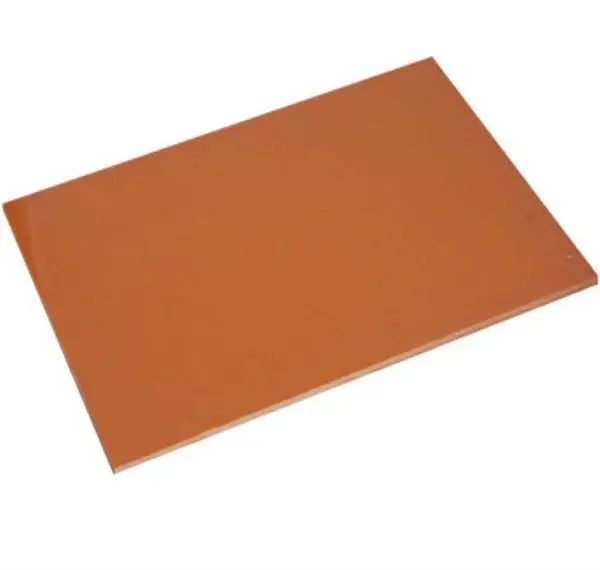What Is the Dielectric Strength of Phenolic Paper Materials?
Understanding Dielectric Strength
Dielectric strength is a fundamental property of insulating materials that measures their ability to withstand electric fields without experiencing electrical breakdown. This characteristic is especially important for phenolic paper materials, as it directly influences their performance in high-voltage environments. Dielectric strength is commonly expressed in kilovolts per millimeter (kV/mm), indicating the maximum electric field the material can tolerate before losing its insulating properties. Ensuring high dielectric strength is critical for maintaining safety and reliability in electrical components where insulation failure can lead to equipment damage or hazards.
Factors Affecting Dielectric Strength
Several factors impact the dielectric strength of phenolic paper materials. The quality and type of the paper substrate significantly affect how well the material can resist electrical stress. The phenolic resin impregnation process, which binds and strengthens the paper layers, also plays a crucial role. Environmental factors such as temperature fluctuations and humidity levels can alter the dielectric properties, sometimes reducing effectiveness. Additionally, the thickness of the phenolic sheet and the presence of impurities or manufacturing defects can compromise the material’s ability to prevent electrical breakdown, highlighting the need for stringent quality control.
Comparative Analysis
When compared to other insulating materials, phenolic paper sheets often exhibit superior dielectric strength. For example, standard plastics like polyethylene typically offer dielectric strengths in the range of 20–25 kV/mm. In contrast, high-quality phenolic paper sheets can achieve dielectric strengths between 30–40 kV/mm or higher, demonstrating their enhanced capability to withstand strong electric fields. This makes phenolic paper sheets especially well-suited for applications requiring compact, reliable insulation where electrical isolation must be maintained under demanding conditions without compromising space or safety.
Breakdown Voltage and Arc Resistance in Electrical Environments
Defining Breakdown Voltage
Breakdown voltage refers to the minimum voltage that causes a portion of an insulator to become electrically conductive. For phenolic paper sheets, this parameter is crucial in determining their suitability for high voltage applications. The breakdown voltage is influenced by factors such as material composition, thickness, and environmental conditions. Understanding this property helps engineers design electrical systems that operate safely within the material's limits.
Arc Resistance Properties
Arc resistance is another critical characteristic of phenolic paper sheets in electrical environments. It measures the material's ability to withstand the formation of a conductive path when subjected to high voltage electrical discharges. Phenolic paper sheets generally exhibit good arc resistance, which is essential in preventing the propagation of electrical faults and maintaining insulation integrity under extreme conditions.
Performance in Extreme Conditions
Phenolic paper sheets demonstrate remarkable resilience in challenging electrical environments. They maintain their insulating properties across a wide temperature range, from cryogenic temperatures to over 200°C in some grades. This thermal stability, combined with their resistance to tracking and erosion, makes them suitable for use in harsh industrial settings where electrical reliability is paramount.
Use of Phenolic Laminates in Transformer and Switchgear Insulation
Application in Transformer Design
Phenolic paper laminates play a crucial role in transformer design and construction. They are commonly used for insulating various components within transformers, such as winding insulation, core insulation, and barrier boards. The high dielectric strength of phenolic laminates ensures effective isolation between different voltage levels within the transformer. Their dimensional stability and resistance to oil impregnation make them particularly suitable for oil-filled transformers, where they help maintain insulation integrity over extended periods.
Switchgear Insulation Solutions
In switchgear applications, phenolic paper sheet laminates serve as reliable insulation materials for various components. They are used in the construction of busbars, phase barriers, and insulating supports. The excellent arc resistance of phenolic paper sheet laminates is particularly beneficial in switchgear, where they help prevent the spread of electrical faults and minimize the risk of equipment damage. Their ability to maintain insulation properties under high temperature and high humidity conditions contributes to the overall reliability of switchgear systems.
Advantages in High Voltage Equipment
The use of phenolic paper laminates in high voltage equipment offers several advantages. Their high dielectric strength allows for compact designs without compromising on insulation performance. The material's resistance to tracking and erosion ensures long-term reliability, even in polluted environments. Additionally, the ease of machining and fabrication of phenolic laminates allows for the creation of complex insulation shapes, facilitating innovative designs in high voltage equipment.
Conclusion
Phenolic paper sheets have proven to be exceptional materials for handling high voltage isolation in various electrical applications. Their impressive dielectric strength, coupled with excellent arc resistance and thermal stability, makes them ideal for use in transformers, switchgear, and other high voltage equipment. As the demand for reliable and efficient electrical systems continues to grow, the role of phenolic paper sheets in ensuring safe and effective high voltage isolation remains crucial. Their versatility and performance under extreme conditions underscore their importance in modern electrical engineering and design.
Contact Us
For more information about our high-quality phenolic paper sheets and how they can meet your high voltage isolation needs, please contact us at info@jhd-material.com. Our team of experts is ready to assist you in finding the perfect solution for your electrical insulation requirements.






